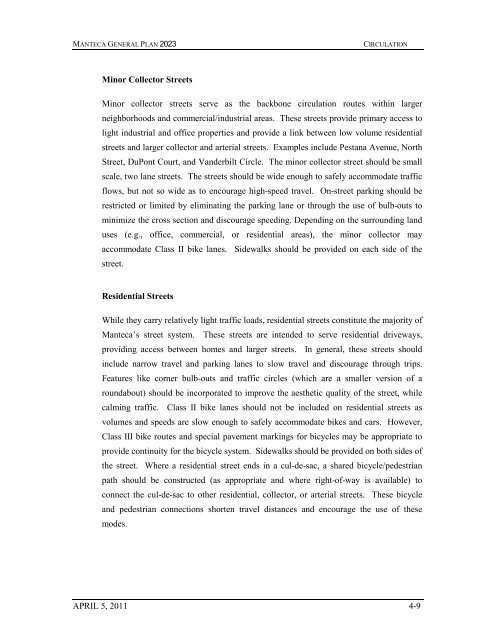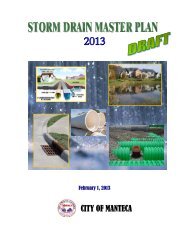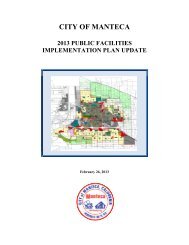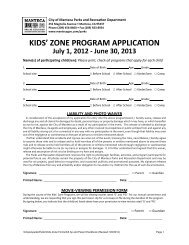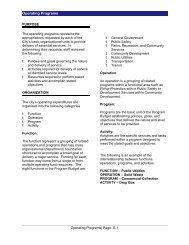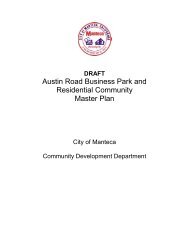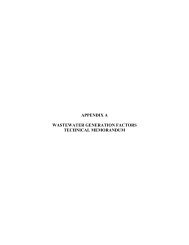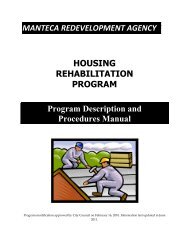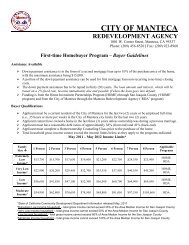General Plan 2023 Policy Document - City of Manteca
General Plan 2023 Policy Document - City of Manteca
General Plan 2023 Policy Document - City of Manteca
You also want an ePaper? Increase the reach of your titles
YUMPU automatically turns print PDFs into web optimized ePapers that Google loves.
MANTECA GENERAL PLAN <strong>2023</strong> CIRCULATION<br />
Minor Collector Streets<br />
Minor collector streets serve as the backbone circulation routes within larger<br />
neighborhoods and commercial/industrial areas. These streets provide primary access to<br />
light industrial and <strong>of</strong>fice properties and provide a link between low volume residential<br />
streets and larger collector and arterial streets. Examples include Pestana Avenue, North<br />
Street, DuPont Court, and Vanderbilt Circle. The minor collector street should be small<br />
scale, two lane streets. The streets should be wide enough to safely accommodate traffic<br />
flows, but not so wide as to encourage high-speed travel. On-street parking should be<br />
restricted or limited by eliminating the parking lane or through the use <strong>of</strong> bulb-outs to<br />
minimize the cross section and discourage speeding. Depending on the surrounding land<br />
uses (e.g., <strong>of</strong>fice, commercial, or residential areas), the minor collector may<br />
accommodate Class II bike lanes. Sidewalks should be provided on each side <strong>of</strong> the<br />
street.<br />
Residential Streets<br />
While they carry relatively light traffic loads, residential streets constitute the majority <strong>of</strong><br />
<strong>Manteca</strong>’s street system. These streets are intended to serve residential driveways,<br />
providing access between homes and larger streets. In general, these streets should<br />
include narrow travel and parking lanes to slow travel and discourage through trips.<br />
Features like corner bulb-outs and traffic circles (which are a smaller version <strong>of</strong> a<br />
roundabout) should be incorporated to improve the aesthetic quality <strong>of</strong> the street, while<br />
calming traffic. Class II bike lanes should not be included on residential streets as<br />
volumes and speeds are slow enough to safely accommodate bikes and cars. However,<br />
Class III bike routes and special pavement markings for bicycles may be appropriate to<br />
provide continuity for the bicycle system. Sidewalks should be provided on both sides <strong>of</strong><br />
the street. Where a residential street ends in a cul-de-sac, a shared bicycle/pedestrian<br />
path should be constructed (as appropriate and where right-<strong>of</strong>-way is available) to<br />
connect the cul-de-sac to other residential, collector, or arterial streets. These bicycle<br />
and pedestrian connections shorten travel distances and encourage the use <strong>of</strong> these<br />
modes.<br />
APRIL 5, 2011 4-9


